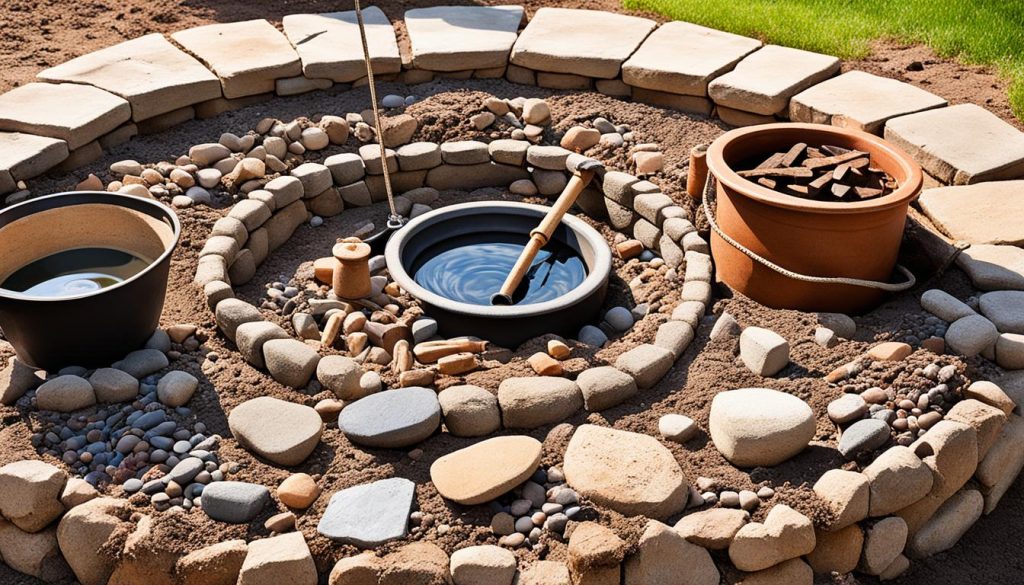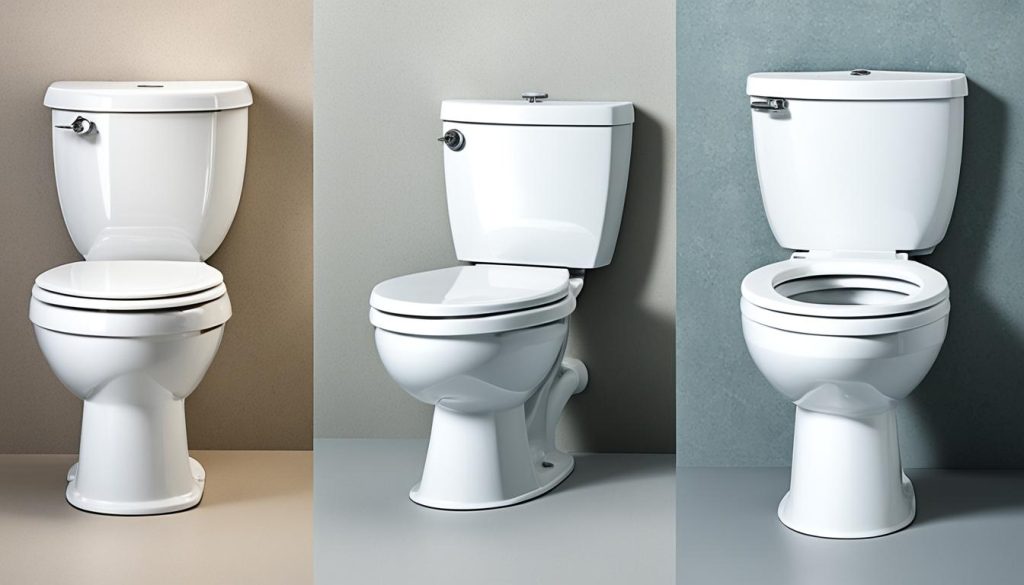Exploring the Origins: When Did Plumbing Start?
Did you know that the concept of plumbing dates back more than five millennia? Plumbing as we know it today may seem like a modern invention, but ancient civilizations such as Sumer, Egypt, Crete, and ancient Rome all had early plumbing systems in place. These advancements in plumbing technology have played a crucial role in improving our quality of life and public health.
Key Takeaways
- The origins of plumbing can be traced back over five millennia to ancient civilizations like Sumer, Egypt, Crete, and ancient Rome.
- Ancient Rome is renowned for its sophisticated system of aqueducts with bronze and lead piping, which helped prevent waste buildup in public latrines and bathhouses.
- The development of interconnected systems of indoor pipes and drains attached to flush toilets and sinks is a more recent innovation.
- In the modern era, plumbing has evolved with advancements in technology and materials, making it more affordable and accessible.
- Innovations like low-flow toilets and water-saving laws have contributed to water conservation efforts and sustainability in plumbing.
Ancient Plumbing Systems
Ancient civilizations like Sumer and Egypt had plumbing systems that were remarkably advanced for their time. These ancient plumbing systems included water pipes, sewers, and even indoor water closets in some cases.
One fascinating example of early plumbing can be found in the Neolithic settlement of Skara Brae in Scotland. This ancient village featured houses with drain-equipped interiors, demonstrating an understanding of the importance of sanitation even thousands of years ago.
However, it was the ancient Romans who truly revolutionized plumbing. Renowned for their sophisticated aqueducts, the Romans used bronze and lead piping to transport water from distant sources to populated areas. These aqueducts not only provided clean water but also played a vital role in preventing waste buildup in public latrines and bathhouses.
These early plumbing systems laid the foundation for the development of modern plumbing as we know it today. They were a testament to the ingenuity and engineering capabilities of ancient civilizations, showcasing their commitment to improving sanitation and hygiene.
| Ancient Civilization | Main Plumbing Features |
|---|---|
| Sumer | Water pipes, drains, and clay sewer systems |
| Egypt | Water channels, irrigation systems, and primitive flush toilets |
| Rome | Aqueducts, lead and bronze pipes, drain systems |
| Skara Brae | Drain-equipped houses, stone-built plumbing |
The ancient plumbing systems serve as a testament to human innovation and the importance of effective water management throughout history. Exploring these ancient civilizations’ plumbing techniques provides valuable insights into the historical development of plumbing and its impact on human civilization.
Early Plumbing Techniques
During ancient times, plumbing systems were rudimentary, and indoor plumbing was virtually nonexistent. Sanitation practices centered around outdoor latrines and the manual disposal of waste. Chamber pots were commonly used for personal needs, and the waste was discarded manually.
The lack of proper sanitation during this period had severe consequences, leading to the spread of diseases such as the bubonic plague. It wasn’t until the late 16th century that significant advancements were made in plumbing technology.
In 1596, Sir John Harrington invented a toilet that featured a flushing mechanism. However, this invention still required manual waste disposal. Alexander Cummings later improved upon Harrington’s design by adding an S-trap, a curved section that trapped water and prevented foul odors from escaping, to create the first patent for a toilet.
The Invention of the Flushing Toilet
The early plumbing technique introduced by Sir John Harrington revolutionized the way waste was disposed of. His invention allowed for a controlled flush, which helped minimize odors and maintain a cleaner living environment.
The design improvement by Alexander Cummings, with the addition of the S-trap, further enhanced the functionality of toilets. The S-trap created a water seal that effectively blocked odors from coming back into the room. This innovation laid the foundation for the modern flushing toilet that we use today.
These early plumbing techniques not only improved sanitation practices but also contributed to the historical development of plumbing as a whole. They set the stage for future advancements in the field, leading to the introduction of more sophisticated and intricate plumbing systems.
Indoor Plumbing Becomes the Norm
The 19th century marked a significant turning point in the history of plumbing, as indoor plumbing and flush toilets became more common. This period saw the introduction of revolutionary technologies that transformed sanitation practices and improved public health.
A notable milestone during this time was the installation of flushable water closets and wastewater disposal systems in the Tremont House hotel in Boston in 1829 by the renowned architect Isaiah Rogers. This breakthrough innovation allowed for the efficient removal of waste and introduced a new level of cleanliness and convenience.
Another iconic landmark that embraced indoor plumbing was the White House. In the 19th century, running water was brought to this esteemed residence, reflecting the growing popularity and acceptance of modern plumbing systems.
The introduction of indoor plumbing was driven by a rising awareness of the health risks associated with poor sanitation. As cities and urban centers expanded during the Industrial Revolution, crowded living conditions exacerbated the need for improved hygiene and waste management. Sewage systems were gradually implemented in major cities, enabling the safe disposal of wastewater and reducing the transmission of diseases.
Inventors and plumbers played a crucial role in refining and enhancing flush toilets and other plumbing components during this time. Notable among them was Thomas Twyford, who made significant improvements to flush toilets, making them more efficient and reliable.
The introduction of indoor plumbing and flush toilets during the 19th century transformed the way people lived and improved the quality of life for many. It marked a historical milestone in the development of sanitation practices, ultimately leading to the sophisticated plumbing systems we rely on today.
Evolution of Plumbing in the Modern Era
Plumbing has come a long way since its ancient origins. The 20th century marked a significant turning point in the evolution of plumbing, with advancements in technology and materials revolutionizing the industry. One of the most notable changes was the move from steel and copper pipes to more affordable and accessible materials like plastics and cast iron.
But it wasn’t just the materials that underwent a transformation. The introduction of water-saving laws and the development of low-flow toilets played a crucial role in the modernization of plumbing systems. These innovations not only reduce water consumption but also contribute to environmental sustainability.
Today, plumbing plays a vital role in our daily lives by providing access to clean water and efficient wastewater removal. The evolution of plumbing has greatly improved our quality of life and public health. It has become an essential part of every household, ensuring that we can enjoy the comfort and convenience of modern amenities.
Source Links
- https://www.lexology.com/library/detail.aspx?g=ab11c6a0-f4f6-4309-9f7b-057ce2e9f923
- https://reddiplumbingwichita.com/blog/plumbing/the-history-of-plumbing
- https://emergencyplumberrousehill.com.au/uncovering-the-origins-of-the-word-plumber-tracing-the-etymology-of-plumbing/
- Investing Wisely: How Windows & Doors in Boost Property Value and Financial Health - April 24, 2025
- The Financial Impact of Personal Injuries: Why Legal Help Matters for Business Owners - April 16, 2025
- The Hidden Financial Costs of Domestic Assault: What Business Owners Need to Know - April 16, 2025













